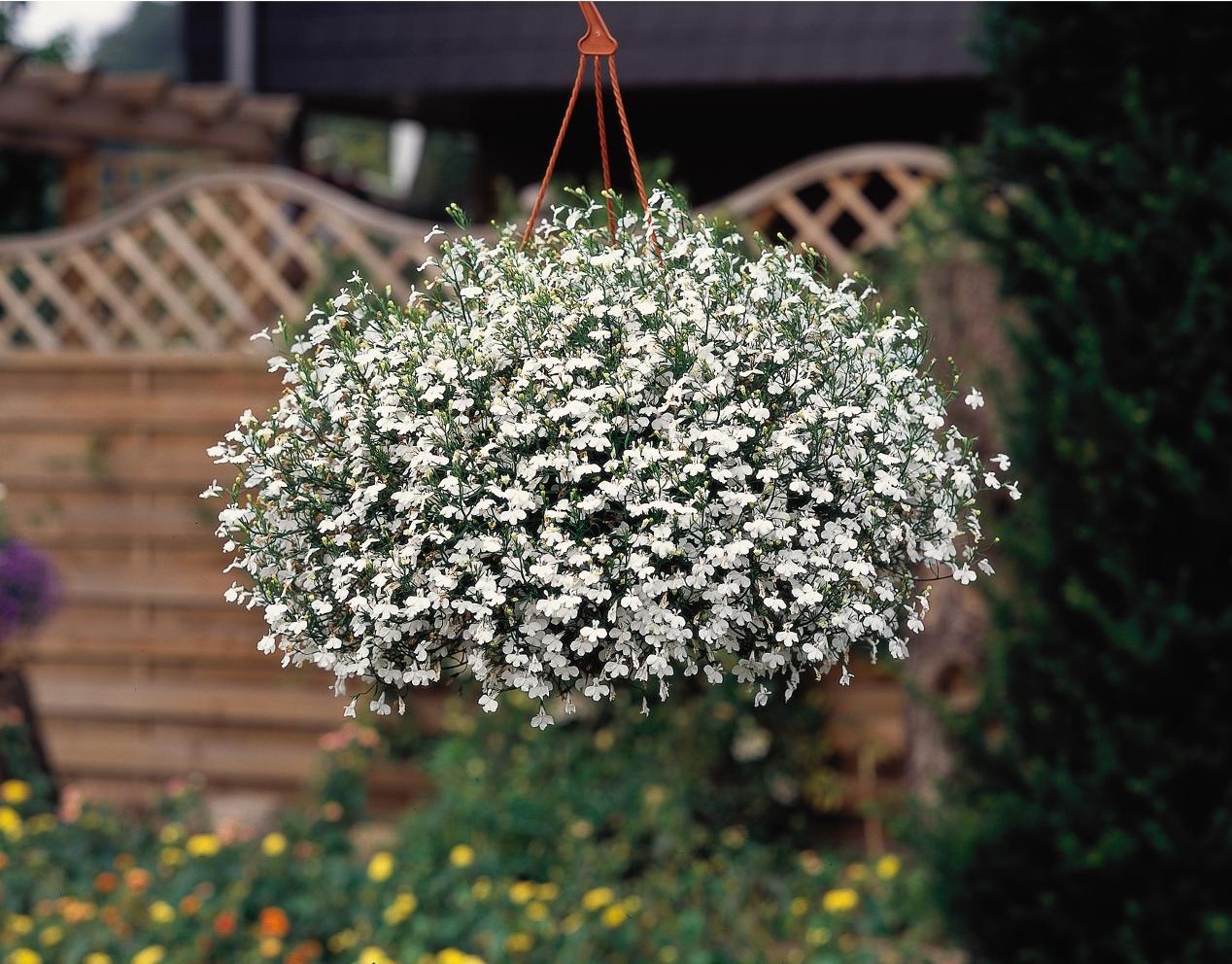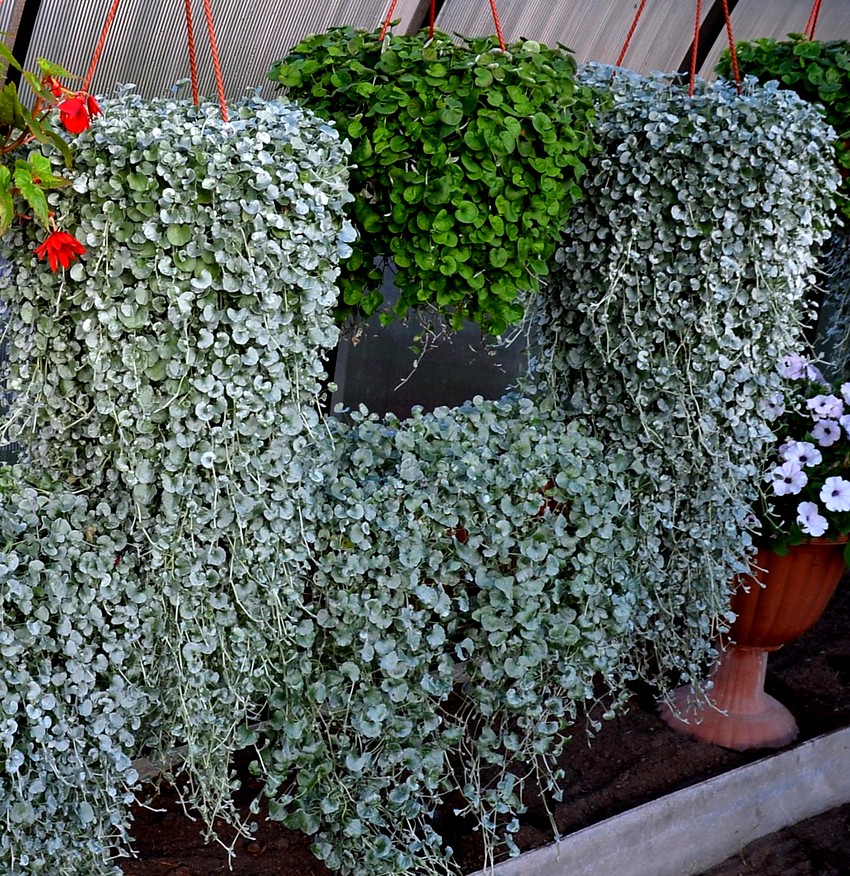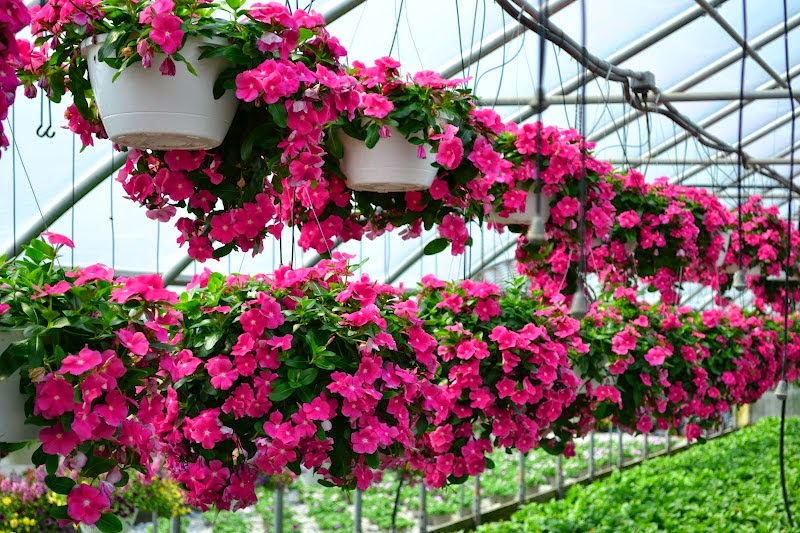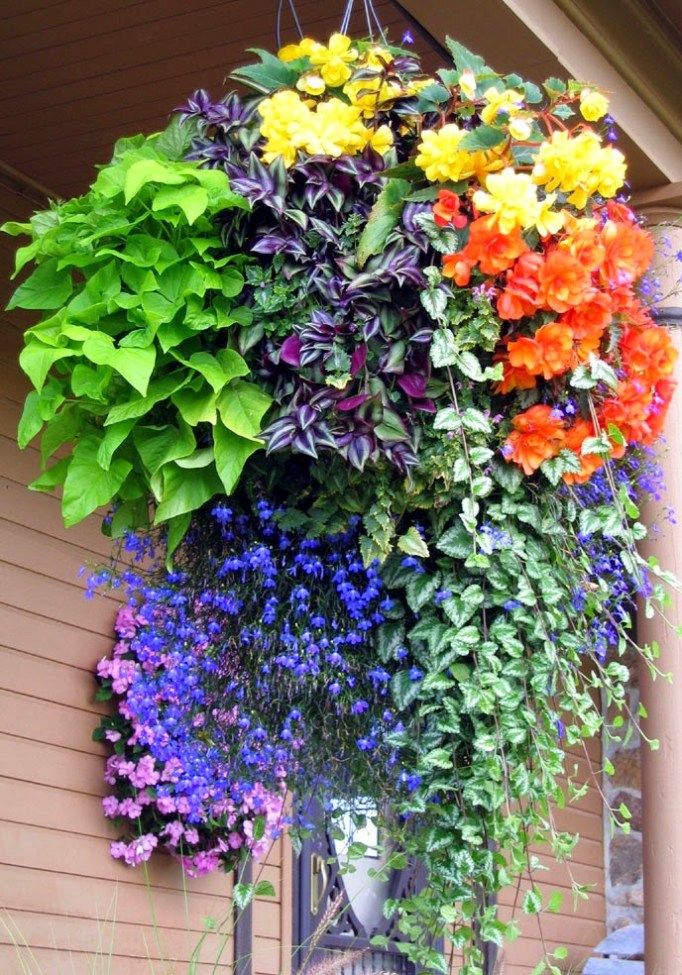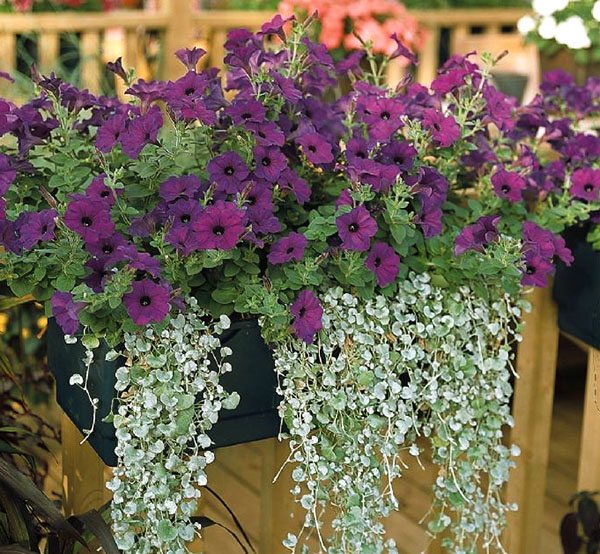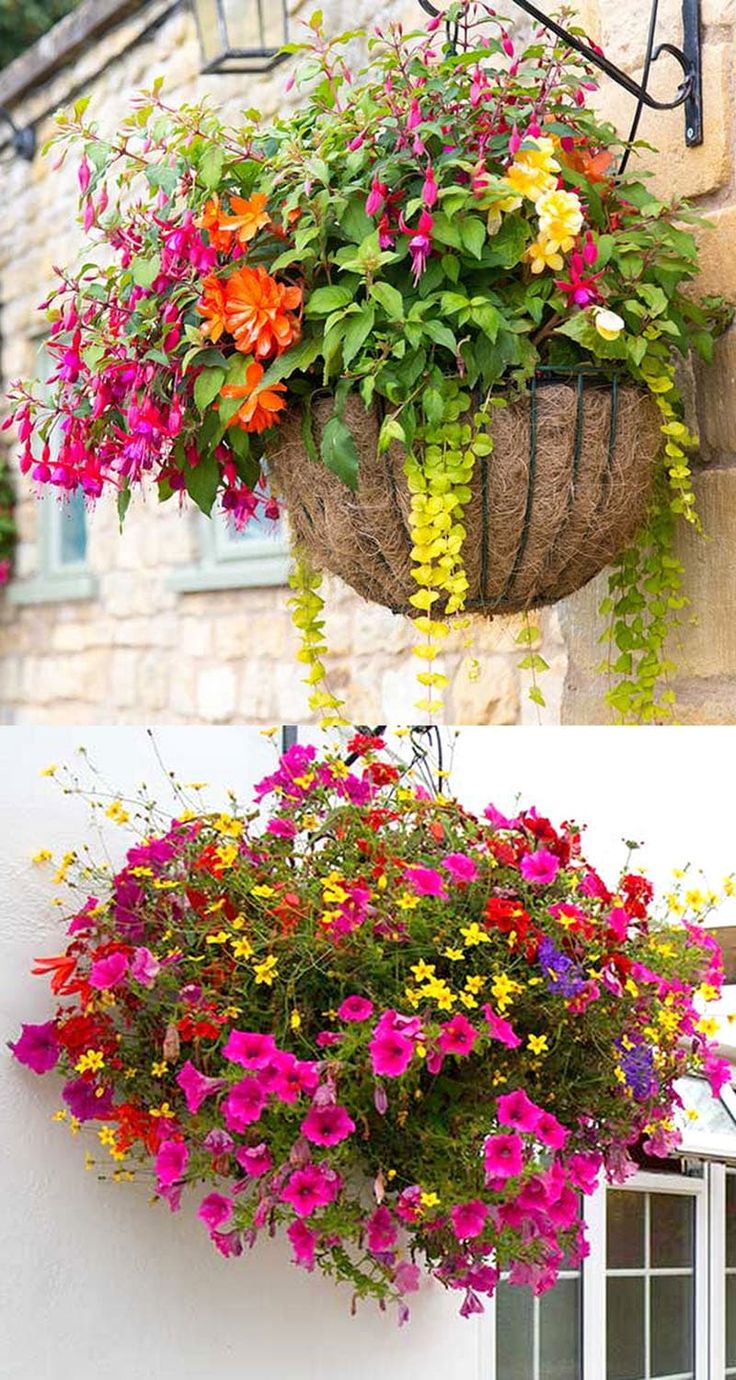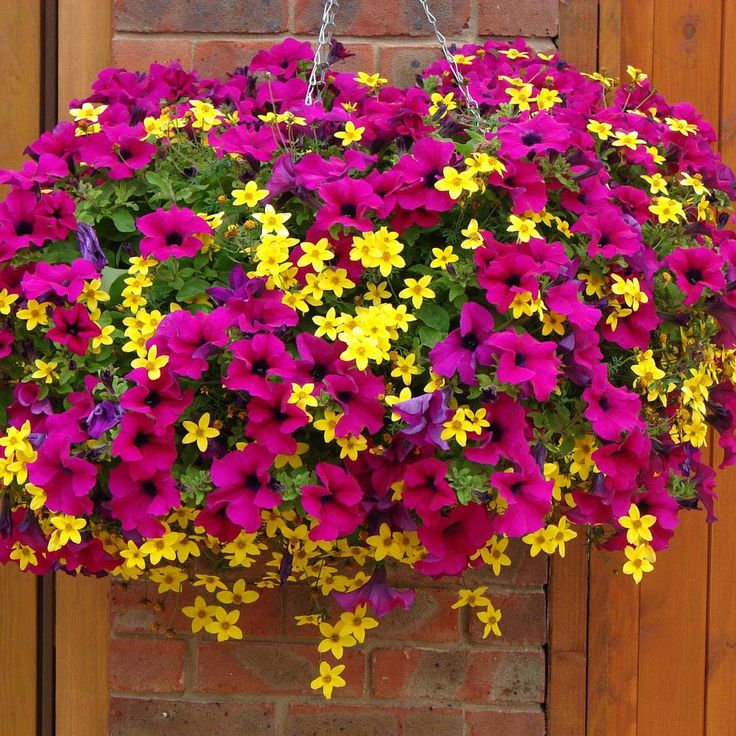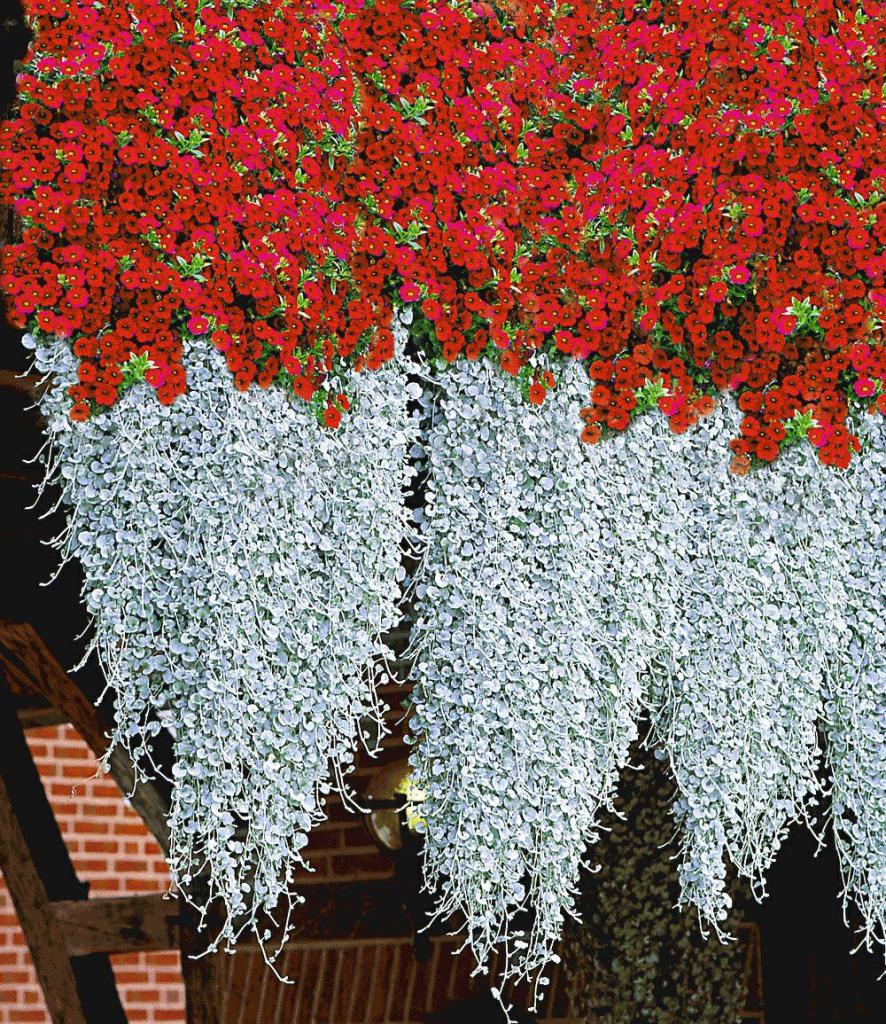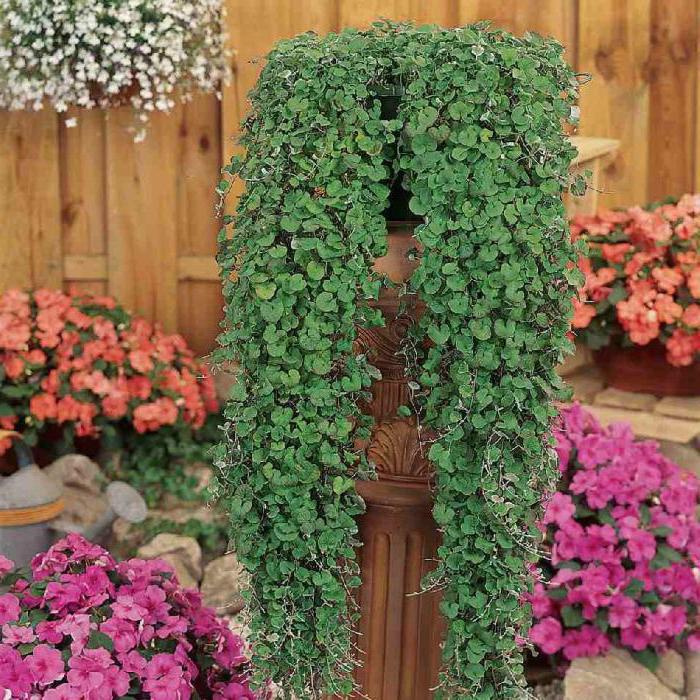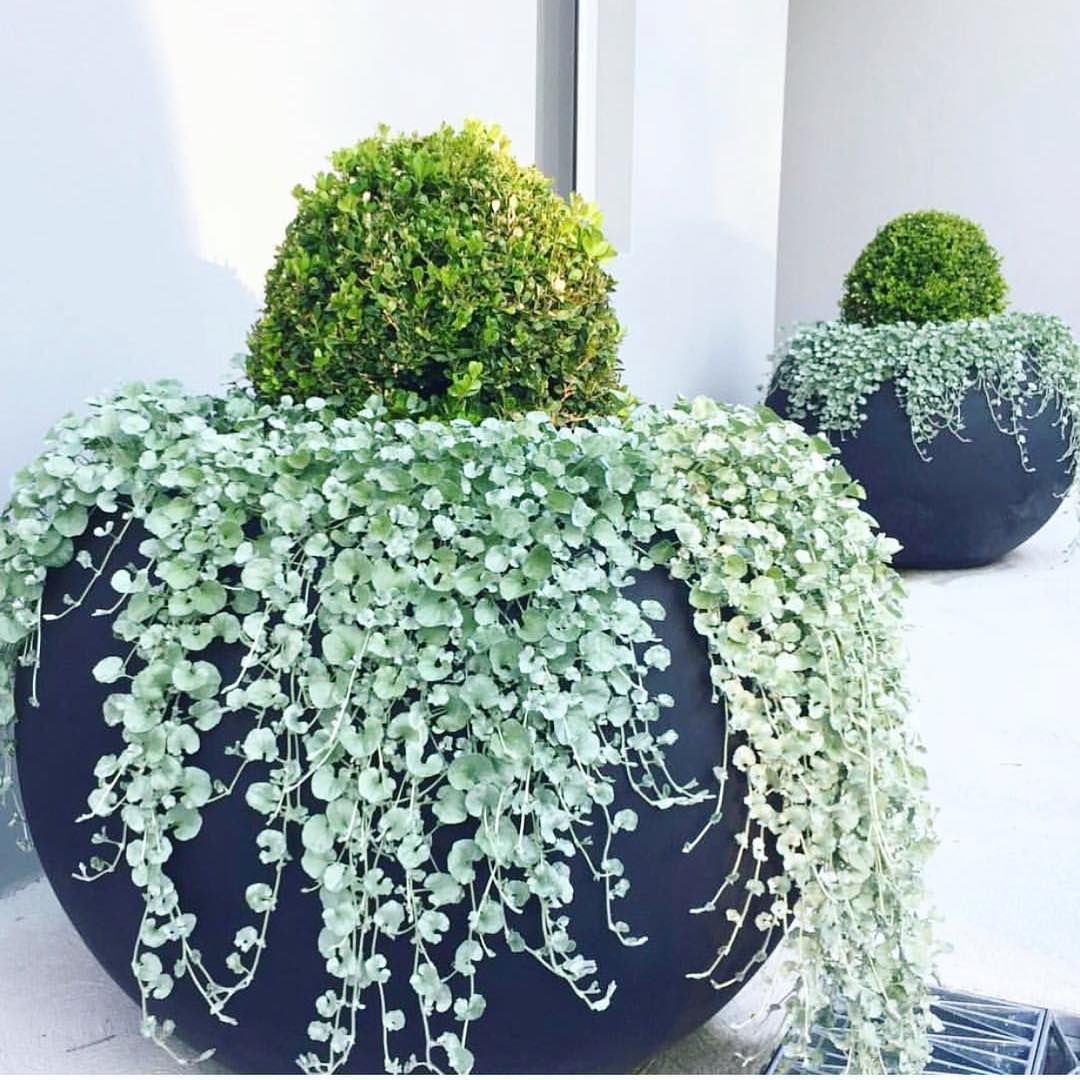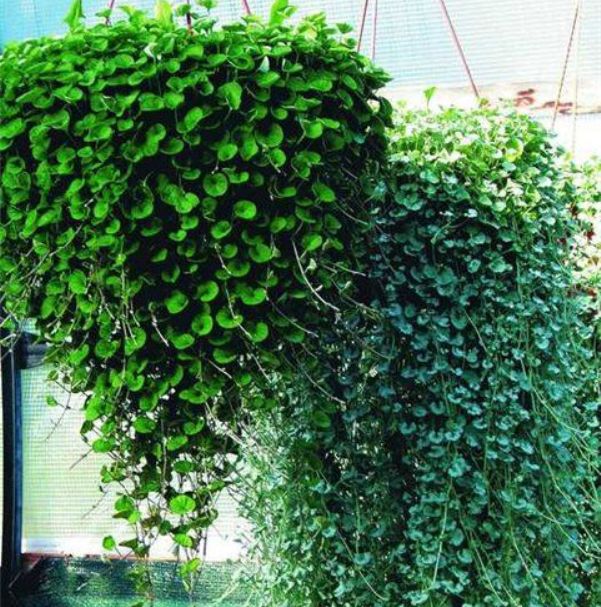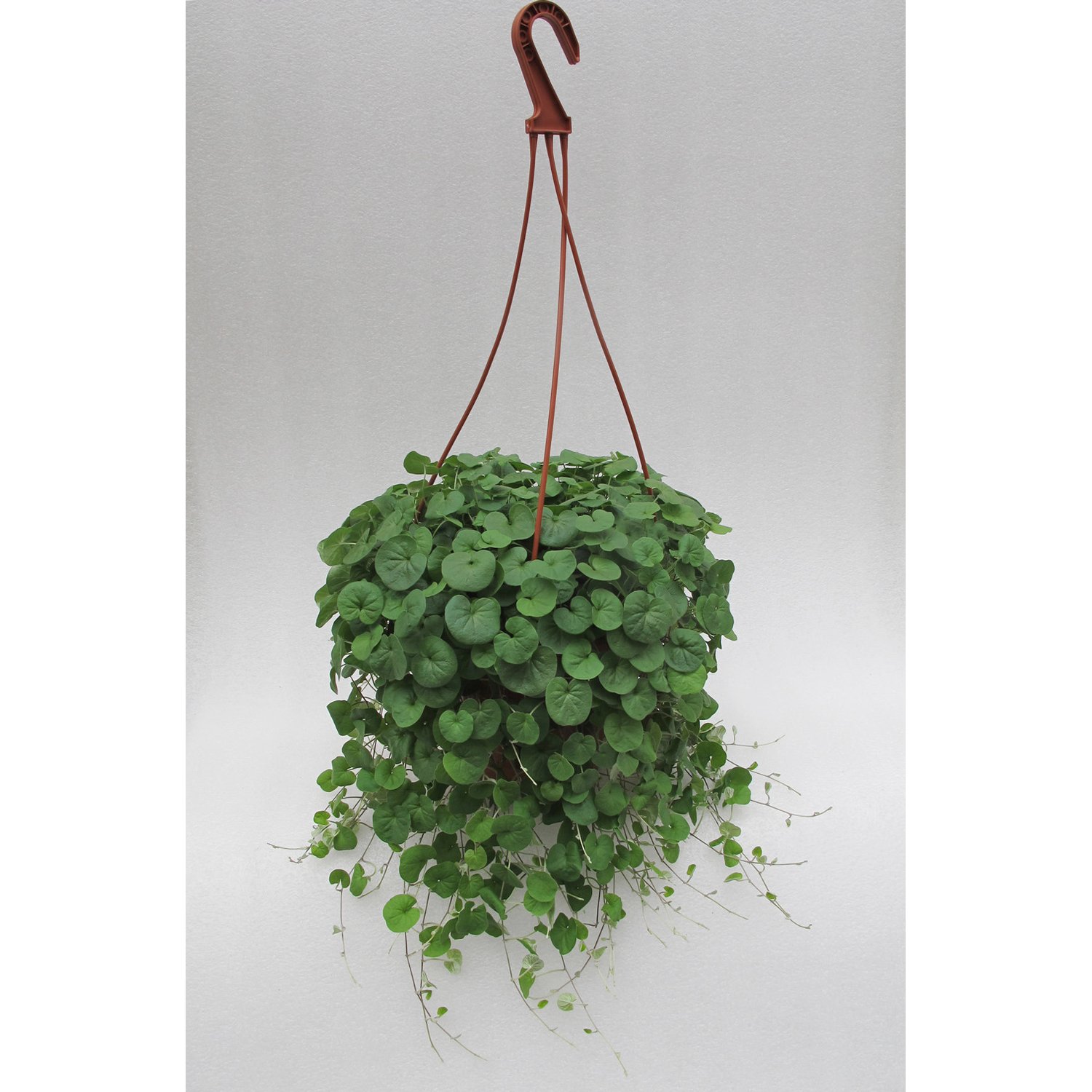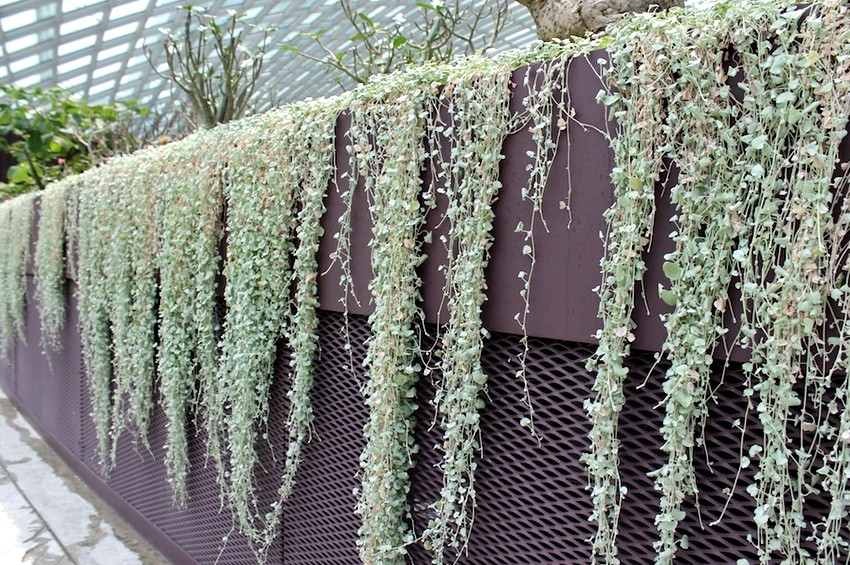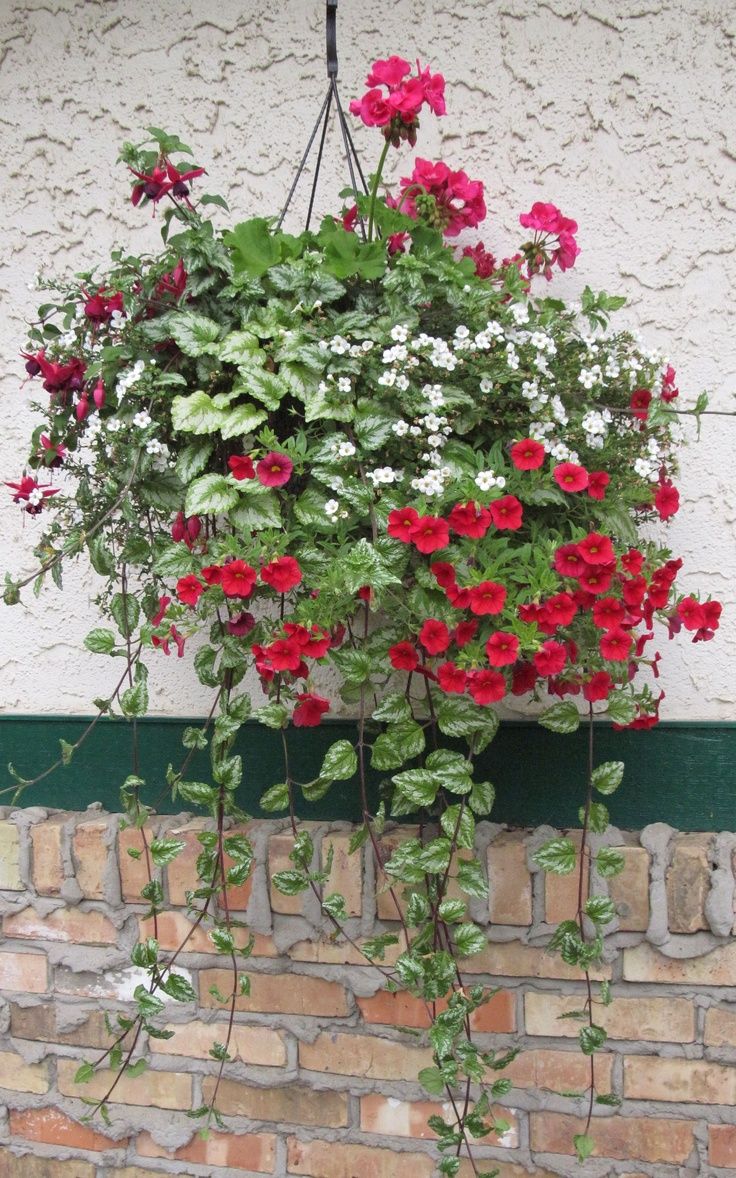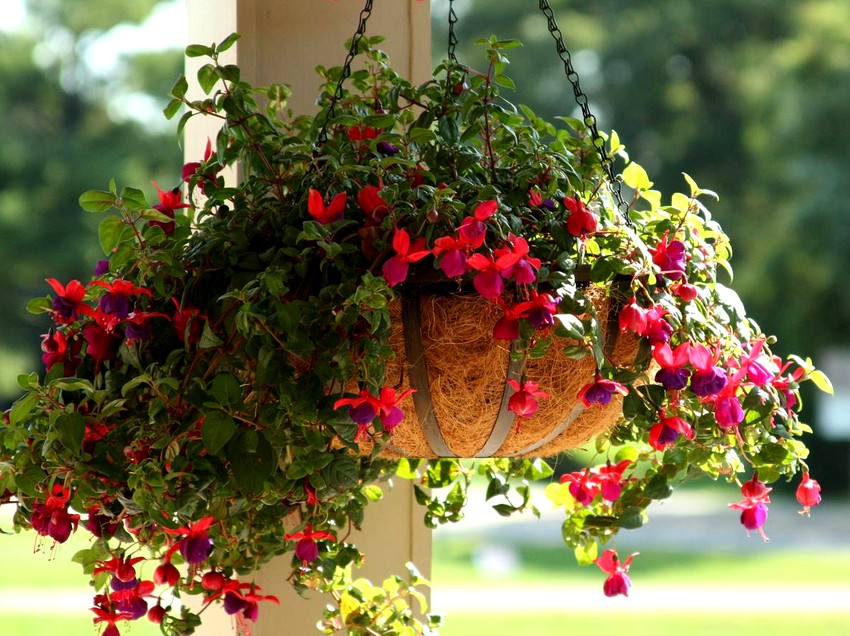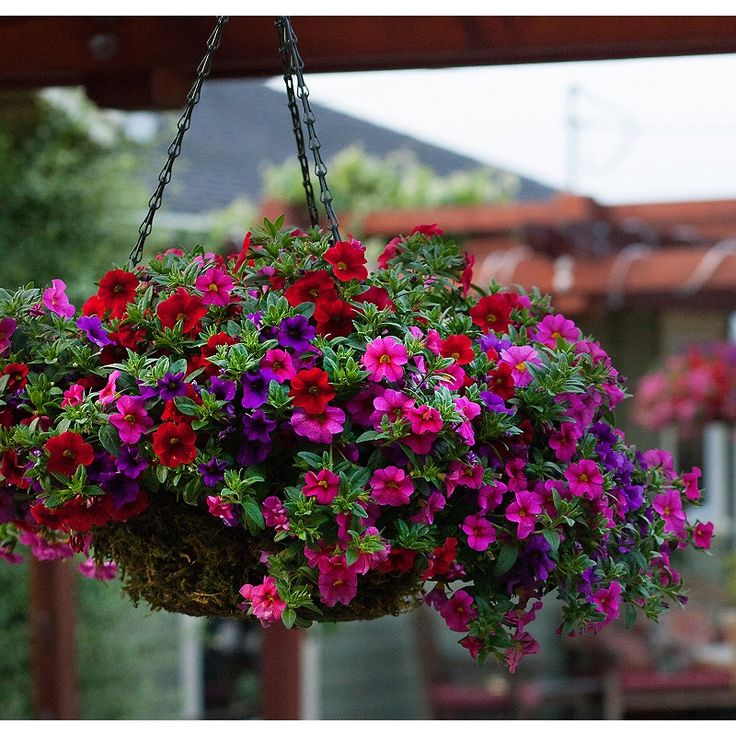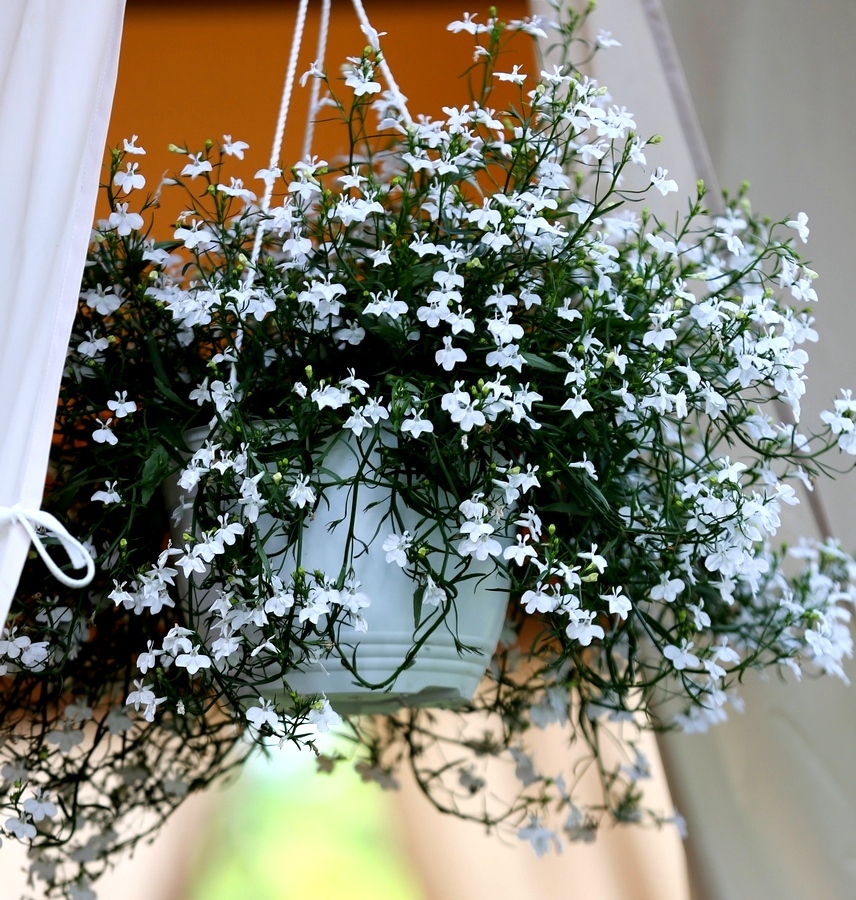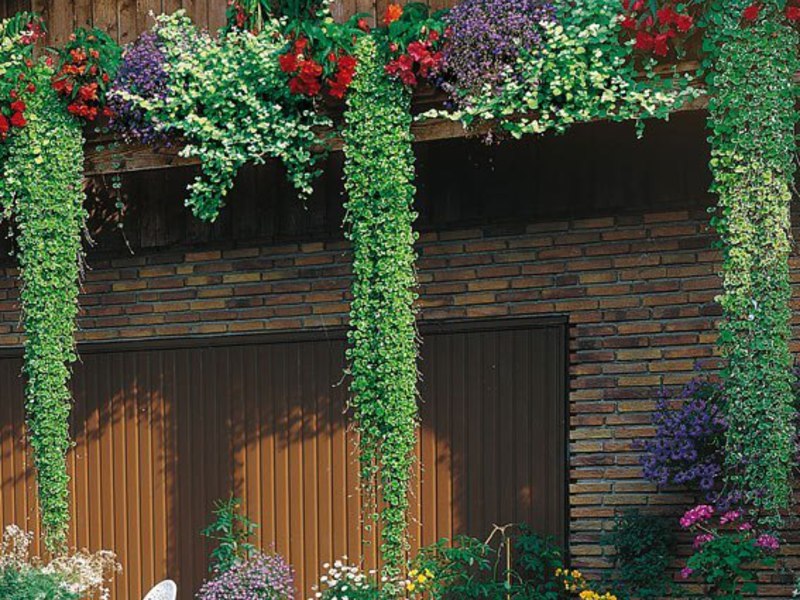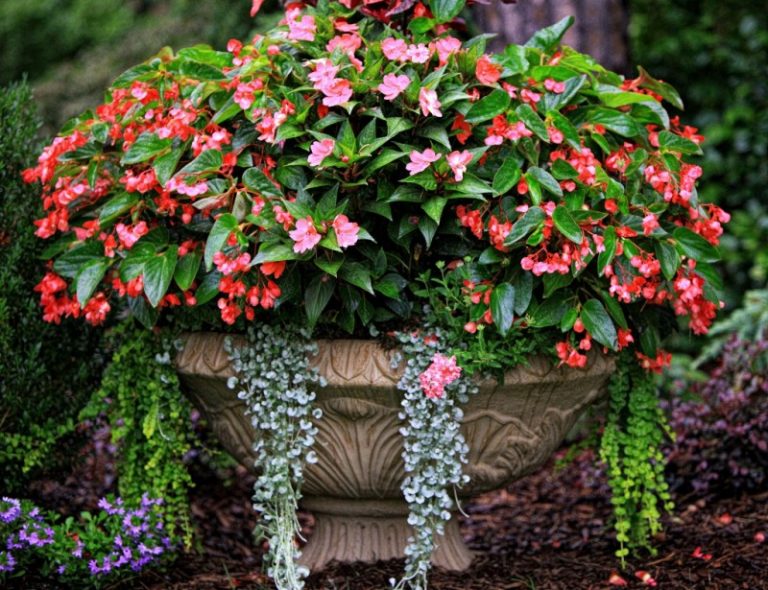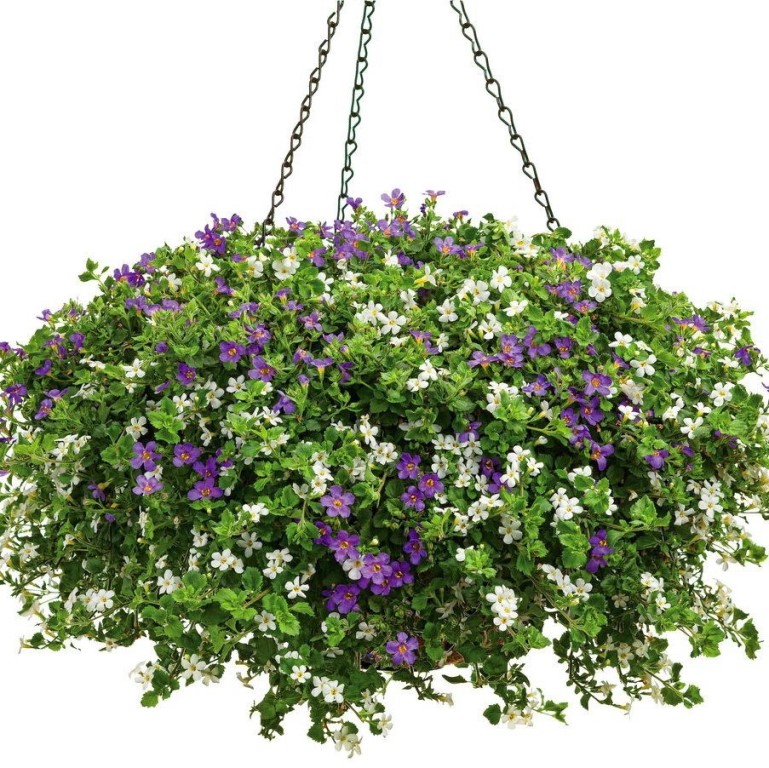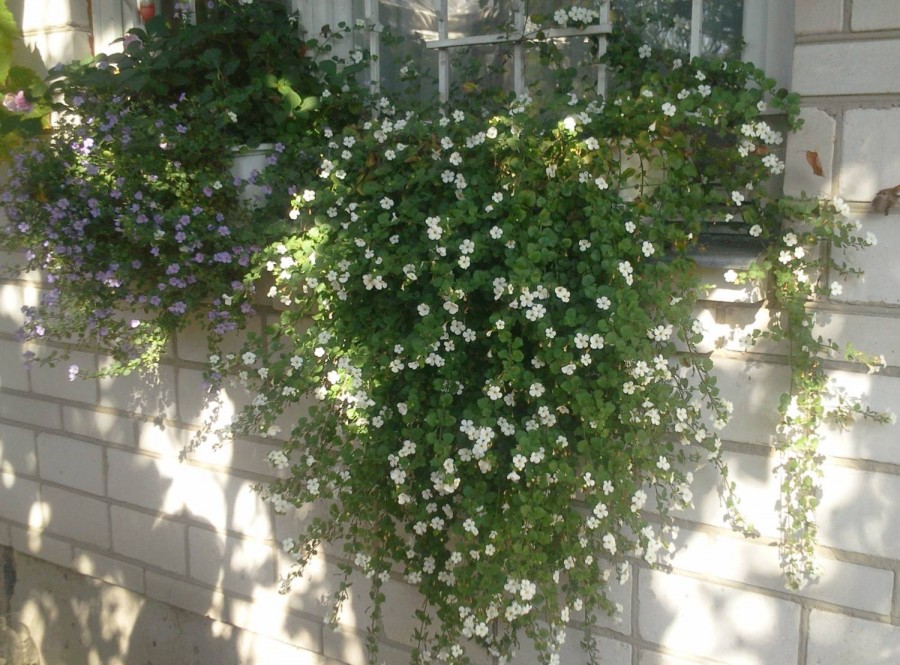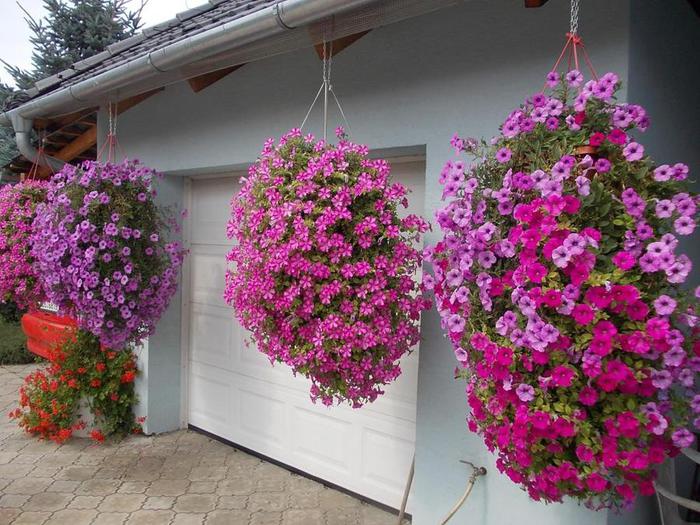What kinds of flowers are there for growing in pots?
In nature, this group of plants is soil-based, and growing at home, they form lush bushes, the shoots of which gently stretch to the ground. The leaves, which are often shiny, give a special appeal to such flowers.
The main types of hanging ampel flowers for pots:
- Chlorophytum. It is a perennial ornamental deciduous plant with narrowish light green leaves. The buds are small. When loose, they have a snow-white shade. This type of plant does not need special care. Chlorophytums are the most unpretentious flowers for growing in pots. They thrive both in the shade and in the sun. Such plants can be planted in any kind of soil. The flower tolerates short-term drought well. Even if the leaves have withered, they recover very quickly after watering.
- Begonia (ampelous). A profusely flowering culture, with proper care, which is abundantly covered with colorful flowers. The buds can be up to 8 centimeters in diameter. Depending on the variety, flowers are double, semi-double and simple. They often take on a red and coral hue, but they can also be orange, white, yellow, crimson and burgundy. Begonia blooms from early spring to late autumn.
- Morning glory or bindweed. This is one of the most popular plants. It can be grown both outdoors and indoors. In order for morning glory to please with its flowering for a long time, it must be provided with a lot of light and often watered. The uniqueness of the flower is the shoots that resemble a vine. Deciduous plates are narrow. The flowers are presented in the shape of a funnel, they delight with their unusual appearance for only one day, after which they fade. But this behavior of the plant is little noticeable, since many new buds appear on the shoots every day.
- Fuchsia (ampelous). An incredibly beautiful plant, the flowers of which can take on a different shade. The buds are medium in size. When loose, they can be double, simple and semi-double. These are the best flowers for planting in pots in the country. They are picky about leaving. In order for the plant to bloom profusely, it is enough to systematically water it and feed it occasionally.
- Bacopa (ampelous). A perennial variety, but gardeners often use it as an annual. Flowers and leaves are small. They can be white, blue, purple and pink. Bacopa blooms throughout the summer. Wintering is best tolerated on a glazed balcony, where the air temperature is within 5C.
No less popular hanging flowers for pots on the street are dichondra, calibrachoa, petunia.
The latter type, due to the variety of shades, is often used to create interesting compositions. Petunia gained its popularity thanks to its bright and large flowers. If the plant is properly planted and the minimum maintenance rules are followed, it will decorate the site throughout the summer season.
On this topic:
BACK
FORWARD
1 of 118
Formation of an ampelous plant
Almost all ampels have to be formed. Without pruning and pinching, the bush will look unkempt, sparse.
The first formation can be carried out even on seedlings - pinch the main stem over 5-6 real leaves. After that, new shoots will grow from the sinuses, and the bush will become more lush. In the future, the formation is reduced to the removal of drying and curved branches in order to give the plant a certain shape: pyramidal, spherical, cascading.
If the ampel does not discard dried inflorescences on its own, they have to be torn off by hand so that the seeds do not have time to set - reproduction greatly weakens the plants, makes flowering scarce.
There is a way of growing ampels, when the shoots are not allowed to hang down, but on the contrary, they are directed upwards along the trellises, ladders, sticks, cords, nets. This shaping method can be used to divide a site or room into zones.
Some tips for growing flowers in pots
Photo 4. Lobelia is a good choice for hanging pots.
To create a suspended flower bed, ordinary garden soil, due to its gravity and quick compaction from irrigation, is not suitable. It is better to purchase a special soil mixture, preferably a flower one, which contains agroperlite.
Planting distance depends on the selected colors. It is better to focus on the recommendations on the seed bags, slightly reducing the distances. If the flowers in the pots are supposed to be placed in the shade, then the planting may be denser.
For normal watering conditions, from the surface of the soil mixture to the edge of the pot should be at least 1-2 cm. Watering the plants is done daily, and on hot days - twice. Ampel plants respond well to spraying them with water.
In order for young shoots to grow evenly, you need to change the position of the pots in relation to the sun every 2 weeks.
Plant feeding (root and foliar) should be regular. In confined spaces, plants are especially sensitive to nutrient deficiencies. Complex flower dressings and a hydrogel that retains moisture in the soil will help to replenish them.
So that ornamental plants in pots do not lose their attractiveness and continue to delight you with a riot of colors and greenery, you need to pinch the elongated shoots and remove withered dry flowers in a timely manner.
As you can see, planting flowers in pots is not an exercise for the lazy. However, it's worth it: the effect of hanging flower arrangements is stunning.
How to choose a hanging container?
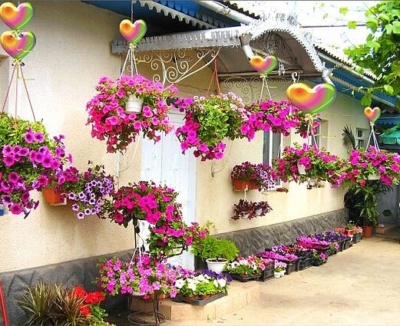
A planter is a container in which a flower pot is placed
On the modern market, pots are presented in a wide variety of materials, designs, colors. So how do you choose? First of all, one should proceed from a practical point of view. If we are talking about ampelous petunia, then it is mainly planted on verandas, gazebos, balconies, around the house, that is, in open areas and rooms. Therefore, it is necessary to choose a material that will not deteriorate from rain, wind and sun. In this case, plastic, ceramic and metal are suitable.
Hanging pots are most suitable for ampelous petunias. Here are some popular varieties:
- Planter on a metal chain with a cocovite insert.
- Planter made of plastic with rattan imitation.
- Simple plastic planter.
- Planter with fastening for balconies and hedges.
The advantages of hanging pots include the following characteristics:
- save horizontal space;
- can be placed where there is no support;
- high mobility, for example, in case of frost, you can easily bring it into a warm room.
Also similar to hanging in their characteristics are wall vases, which can perfectly decorate the walls of your gazebo or terrace.
An interesting type of pots in the form of a floor vase, in which ampelous plants will fall in a beautiful waterfall to the very ground. Such a vase can be made of plastic and ceramics.
You can build a tall vase from several large, flatter vases, if you put one on top of the other, then your garden will have a kind of fountain of flowers.
Assortment of ampelous plants
The range of ampelous plants is expanding from year to year, breeders offer ampelous forms of flowering crops familiar to everyone, such as snapdragon or verbena. The upright letniks, familiar to many, can now be purchased for hanging baskets in ampelous form.
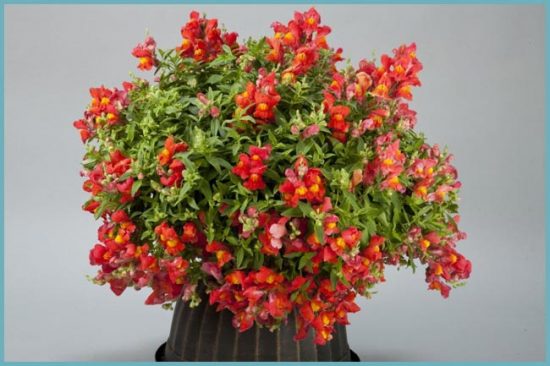 Snapdragon ampelous
Snapdragon ampelous
Snapdragon trumpet varieties are ideal for decorating hanging planters:
- Variety of colors - ampelous snapdragon is painted in pure tones of yellow, orange, crimson, white. There are varieties with a two-tone color.
- Perfumed long-lasting fragrance is the biggest advantage of snapdragon. The surprisingly delicate aroma exuded by antirrinum flowers will not leave anyone indifferent.
- Resistant to weather conditions - snapdragons do not lose their flower corolla color when grown in the shade or in bright sun; flowers do not deteriorate when hit by raindrops; flowering lasts until the onset of stable autumn frosts without loss of decorative qualities.
New varieties of ampelous verbena amaze with the huge size of bright flower baskets. The varieties of the new selection are often painted in bright tones of red, lilac, pink flowers, some varietal series have a bright white eye in the center of the flower. Against a contrasting background, the white center of a charming flower looks contrasting. Verbena does not fade in the sun, when old faded baskets are removed, new bud formation and a second wave of flowering are stimulated. The plant is able to delight with bright flowers until autumn, which allows you to reduce the cost of replanting new plants in baskets instead of faded varieties.
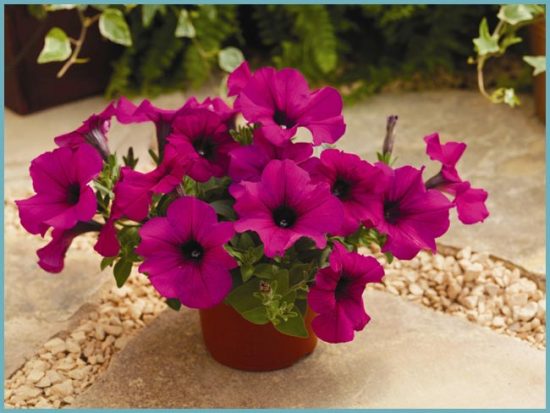 Petunia ampelous hybrid
Petunia ampelous hybrid
And the most common crop for growing in hanging baskets is petunia. The wonderful scent of petunia flowers intensifies in the evening and at night, so the evening garden is full of inexplicable mystery and charm, if only petunia grows in it. Corollas of flowers have a simple and double shape, painted in tones of purple and ruby, there are varieties of amethyst and white, two-tone and edged. There is no limit to the variety of varieties of ampel petunia.
The Solanaceae family includes surfiniya, a close relative of petunia, which is more resistant to disease, has a powerful stem and is distinguished by abundant flowering. Surfinia are represented in the ampel kingdom by miniature varieties and giant plants - some varieties of ampel surfinia do not reach a length of 15 cm, others stretch up to 2 meters. The main feature of the plant is abundant flowering. The shoots are simply strewn with colorful bells, forming a blooming waterfall.
The most popular are the following varieties of ampelous surfinias:
Burgundy is a huge branchy bush completely covered with wine-red flowers of an amazing shade. The plant is very bright, powerful, grows well outdoors, has powerful shoots that do not break in the wind.
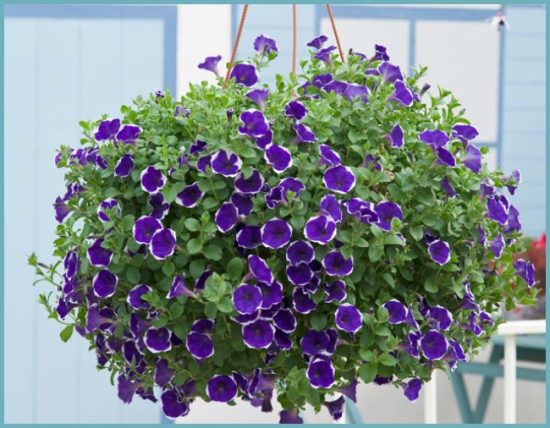 Surfinia ampelous
Surfinia ampelous
- Hot Pink - the petals of this variety are colored caramel pink with thin veins of thick raspberries. The flower has an undulating limb of the corolla, very gentle and touching.
- Table White - snow-white bell-shaped flowers can be used for variety and decoration of any ampelous composition.
- Elow is a hybrid surfinia with delicate yellow flowers that are good in mono plantings and fit perfectly into contrasting compositions.
The assortment of ampelous plants is so wide and rich that you can always find the most ideal option for any solution in garden design. By combining different ampelous flower cultures, you can achieve a unique charm when decorating vertical compositions in the garden and on the balcony.
Planting and breeding
Climbing indoor plants are propagated and rejuvenated using an apical cutting, which is cut and rooted directly with the leaves. If the vine has aerial roots, immediately dig the sprout into the soil, and if not, leave it in the water first. Seeds for propagation are rarely used: it is not very convenient and not effective enough.
When the liana is rejuvenated, its lower bare part is cut off almost to the middle: this way the plant will begin to expand and branch again. It is recommended not to transplant adult plants, but to transfer them with an earthen clod. Do this with a helper to avoid breaking long stems.
Plants for hanging planters
Equivalent campanula, fuchsia, ampelous begonia are well known to lovers of indoor plants. When hung on balconies and verandas in the summer, these plush representatives should still receive adequate care. It is necessary to loosen and moisten the soil, protect it from direct sunlight for a long time.For prolonged flowering of campanula, wilted flowers are removed in time.
In the open air in summer, annuals are used: petunia, snapdragon, viola, especially curly varieties, nasturtium. These plants can be planted without being combined with other plants. Compositions are made from geranium and petunia. Begonia and fuchsia are combined with love. Petunia is supplemented with verbena or dichondra.
The choice of ampelous plants for the garden
An ampelous flower is a plant that can be used to decorate a veranda, a gazebo, a fence. Arranged flowerpots along the terraces will look good. An inconspicuous wall can be decorated with vines of climbing plants planted in the ground, having previously set the directions with tied ropes.
Interesting! Vines can be used to form a metal arch, which will serve as a guiding support for the flower.
You can decorate old things with ampel flowers, giving them a second chance at life. For the designer, there is no question what it means - ampelous, he understands that such plants can be used to decorate a broken bicycle, kettle, small cart, wheel.
Flowers for the east or west balcony
Balconies facing east or west are suitable for most indoor plants due to moderate light conditions.
Verbena
Popular names of this plant: pigeon, cast-iron grass, "Juno's tears" and others. Verbena is known not only for its decorative properties, but also for its healing properties: since ancient times it has been used in folk medicine. Verbena is popular as a garden plant grown in flower beds. Nevertheless, on the balcony, she feels no worse than in the open field. The flowering period of verbena is quite long - from June to November.
Marigolds (tagetes)
The homeland of marigolds is Mexico, in some countries this plant is used in cooking as a seasoning. Due to the fact that the flowering of marigolds is very abundant and long, these flowers have gained popularity both in gardens and on balconies. Marigolds tolerate both heat and windy weather well. They are comfortable in almost any conditions.
Daisy
In the middle lane, daisies bloom in May and continue to delight the eye until the onset of cold weather. An unpretentious compact plant thrives in shaded areas, so a low-light balcony is quite suitable for this garden flower.
Heather
Do you want your balcony to remain decorative in winter? Plant heather, a frost-hardy shrub that blooms from January to April. Some plants of the heather family bloom in the fall, such as Erika gracilis. Even when the heather practically dies (freezes), it does not lose its decorative effect.
Growing seedlings
Growing lobelia in the form of seedlings will allow gardeners to admire the buds from the first months of summer, if everything is done correctly and carefully. In order to start planting seedlings, you need to prepare in advance the container necessary for planting it. And you need to start the sowing stage from the first days of February. First of all, you need to prepare the soil for this amazing flower. You will need garden soil, which must be mixed with ordinary river sand.
Note! And in order to kill various bacteria, it must be kept in a regular oven for 10 minutes at a temperature of 180 degrees. In the container where the seedlings will be sown, you need to make a small hole
It is necessary for the outflow of fluid. Next, you need to pour a rather thick layer of expanded clay or broken brick. Pre-fried earth is poured into the container and pressed a little, leveling it in advance. When soil is poured into the container, it must be rinsed. After moistening the soil, seeds are placed in it, only they need to be distributed at large intervals from each other. It will be more convenient to do this with seeds that are in granules. All containers must be closed with glass or a bag. Then containers with future seedlings are placed in a place where it is warm and there is enough light.
In the container where the seedlings will be sown, you need to make a small hole. It is necessary for the outflow of fluid. Next, you need to pour a rather thick layer of expanded clay or broken brick. Pre-fried earth is poured into the container and pressed a little, leveling it in advance. When soil is poured into the container, it must be rinsed. After moistening the soil, seeds are placed in it, only they need to be distributed at large intervals from each other. It will be more convenient to do this with seeds that are in granules. All containers must be closed with glass or a bag. Then containers with future seedlings are placed in a place where it is warm and there is enough light.
Sowing seeds in pots
First, you need to understand that the soil for lobelia needs airy, light, moist and loose. The soil should be well saturated with air for the plant to be comfortable. Seedlings should be planted in open ground, which contains sand and humus. The plant successfully takes root in slightly acidic or neutral soil. To sow seeds, a small planter or any similar container will do. Sometimes the seeds are placed directly in open ground.

Flower in a hanging planter
Features and benefits of ampelous plants
A characteristic feature of plants is a flexible stem that needs support: the flower winds upwards along special nets or stands. In the absence of support for the shoots, the pots are installed or suspended at the required height.
Floral wall from ampelous Viola
Some plants are used as a ground cover crop, planted in open ground. However, this method does not reveal their true beauty.
The use of this plant species is not limited. They are grown:
- as home decoration or on balconies;
- to create comfort in summer cottages, hanging out pots near verandas, gazebos;
- in greenhouses, botanical gardens;
- for the improvement of public places (parks, squares, stations).
The advantages of growing ampelous plants:
- Mobility. The question of changing the location of the flower is solved instantly: just move the pot to the right place.
- A variety of varieties for creating picturesque compositions.
- Saving space. Flowers do not need to look for free space on the windowsill, shelf. When suspended, they will take up space, like a wall painting.
- Easy maintenance in the form of regular watering and good lighting.
- Rapid growth and flowering throughout the warm season.
- Growing in an urban setting. The lack of a summer cottage is not a reason to abandon gardening: plants can be grown in pots on the balcony, giving it an extraordinary look.
Petunia
She can rightfully be called the “queen” among all ampelous plants. A rare gardener does not plant it on his site.
Petunia - the queen of ampelous plants Florists love petunia for a wide variety of colors, relative unpretentiousness and long flowering - from early spring to late autumn. Even if you completely dry the plant, just spill it well, and the petunia will delight you with flowering again. Prefers fertile, slightly acidic soil, it is better to place it in a warm, well-lit place.
Caring for ampel indoor plants
These simple guidelines will help create a comfortable living environment for ampels:
- Decorative deciduous species should be located behind a window curtain at a distance of 20-30 cm from the window, then they will have enough light;
- The flowering varieties will thrive on a west or east facing window. In this case, the direct rays of the sun will affect them only in the morning and evening;
- If you place ampelous indoor flowers on risers or shelves, take care of a light plastic pot and high drainage in advance;
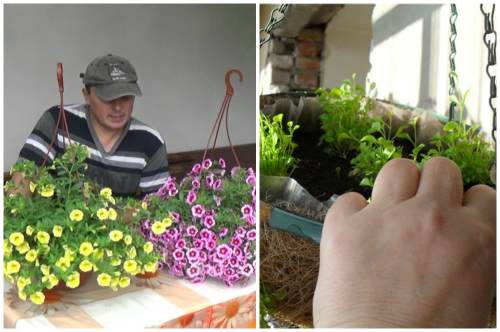
- A flower located at a height is exposed to dry air and begins to dry out faster, so you need to regularly spray its leaves with water from a spray bottle and loosen the ground, slightly removing the top layer;
- When growing in pots, make sure that the mountings can support the weight of the plant together with the soil when watered. You also need to place the pots so that it is convenient to spray the flower and monitor the condition of the soil;
- Do not forget to remove excess moisture after watering, otherwise the ampel may start to rot;
- During the heating season, dishes with water should be placed next to the pot to give the flora representative additional moisture. We wrote here how to humidify the air in the room.
Pay attention to these simple tips and you can turn any room into a green paradise.
Correct plant formation
Most of them twine the provided supports on their own, and you should not interfere in this process. To get a long central lash, she needs to wrap around the post and fix it. To make the liana more fluffy and friable, pinch it in the area of the top. In this case, lateral layers begin to grow actively.
All crops need support, but some crops need to be tied by hand. At a height, you can fix the ampels using a bamboo ladder or place them in hanging pots, baskets made of wire (other materials).
Transplant
When the flower stops growing, the roots begin to peek out of the pot, the leaves turn yellow, the inflorescences become small and quickly fall off, then it is time to transplant it. It is best to carry out the procedure in the spring months, when the flowers enter the period of active vegetative growth. You should not carry out such manipulations during flowering.
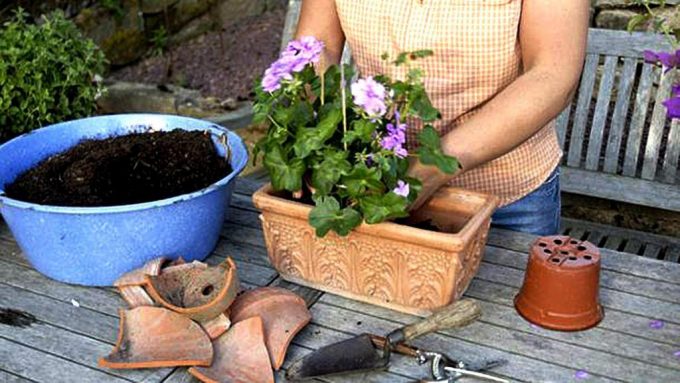
It is recommended to replant ampels every year, while it is better to take a container two to three centimeters larger than the old one. The plant is tilted along with the pot and the walls of the container are tapped so that the earthen lump leaves them. Then you should pull it out and cut off the small lateral and intertwined layers.
Too thick roots are also cut off if they are rotten. A drainage layer of sand or pebbles about a centimeter high is poured onto the bottom of the new container. The flower is placed in a new pot and soil is poured. At this moment, the ampel must be held in order not to damage it. The root collar is placed so that it is slightly below the edge of the container.
The growth of the plant depends on how much the soil is rammed. If you want the flower to grow actively, the substrate is not rammed. In order for the flower to quickly begin to form buds, the soil, on the contrary, is compacted. After transplanting, the ampel should be watered abundantly and put in the shade for several days so that it adapts and takes root.
Clipping and fertilizing
These varieties of plants are actively growing, so they are trimmed every spring so that the shoots do not intertwine with each other, and they do not lose their decorative appearance. You need to cut off up to one third of the entire crown or only the upper buds. All whips without leaves or too long are also cut off.
Top dressing is carried out with fertilizers containing nitrogen and potassium. It is impossible for top dressing to fall on the leaves. For plants that are valuable for their flowering, additional feeding is required. It is carried out at the time when the buds are forming.
Planting petunias in a hanging pot
Planting petunias in a hanging pot is carried out through seedlings. This is done so that the plant can bloom quickly. Seed planting takes place in February.
How to plant petunia in a flower pot:
- Pour the nutrient substrate into the container, then moisten it, and then put the seeds on top.
- Close the box with glass and take it to a warm room. The first shoots should appear in a few days. At first, the sprouts take a very long time to form and require careful maintenance. Seedlings must be regularly moistened and ventilated. The room must have high humidity.However, in this case, the formation of rot or black legs on the roots should not be allowed.
- When the sprouts grow up and leaves are formed, the seedlings can be dived into separate containers.
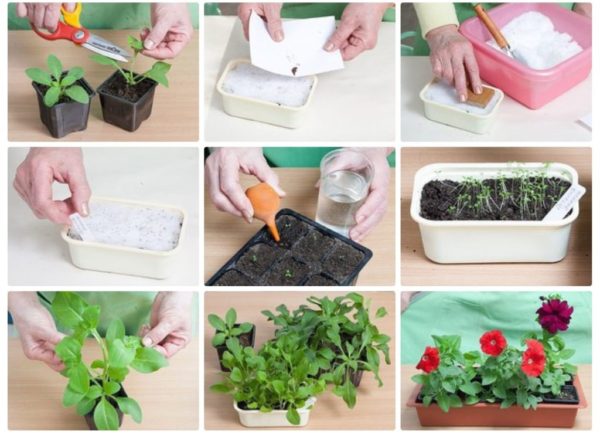
Transplanting seedlings into a hanging planter should be carried out when the weather is constantly warm outside.
The number of petunias planted in one pot will depend on the type of plant and container size. The main thing is that the flowers have enough nutrients. With their deficiency, the culture does not develop well, and the flowering is not very strong.
How much soil is required:
- ampel and cascade species require from 3 to 5 liters of land per bush;
- varieties "typhoon" and "tornado" will need up to 15 liters of substrate per plant;
- floribunda and bush group need about 2 liters of soil per root.
You need to plant seedlings at a distance of 20 centimeters from each other.
What is noteworthy, in one planter, you can combine several varieties of plants, as well as plant lobelia next to the petunia. It is also recommended to plant allisum seeds with it. Such a flower arrangement will look very impressive.

Cookovites or pots with petunias should be placed where there is a lot of sunlight. Pots with ampel varieties can be hung on tree branches, and bush varieties can be sent to flowerpots and installed on terraces or balconies.
Planter size
When choosing a pot, you should consider the type of plant. For example, petunia of ampelous or cascading species requires a pot of five liters, terry bushes need three liters. When planting simple varieties, you can place up to five bushes in one container. No more - the plants interfere with each other. But with a smaller amount, the flower garden will look pretty dull.
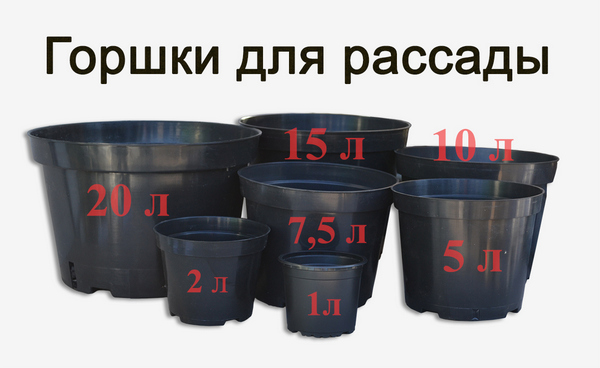
The required size of the pots depends on the type of petunia
Gardeners often use improvised items for the pot - mayonnaise plastic buckets, paint cans (also plastic). One petunia is planted in one such "pot". Be sure to take care of the possibility of water waste. Lovers of petunias are advised to put foam rubber on the bottom of the pot, taking away excess water
What the pot is made of is not so important

In one small "pot", for example, a plastic bucket from mayonnaise, you can plant only one petunia


